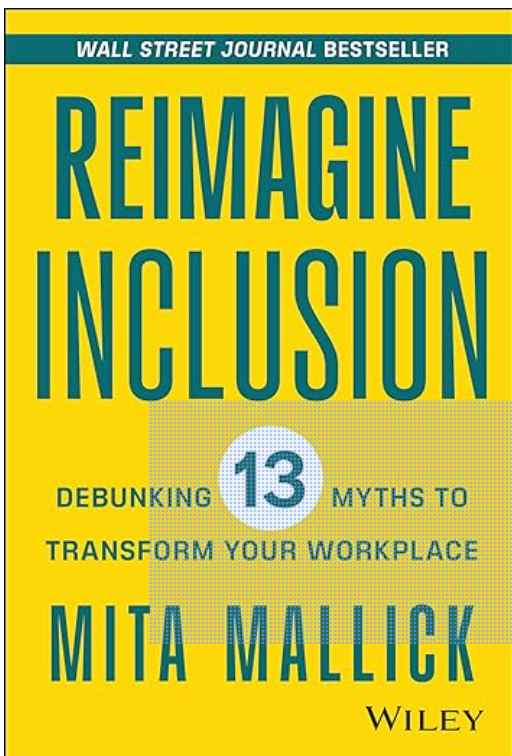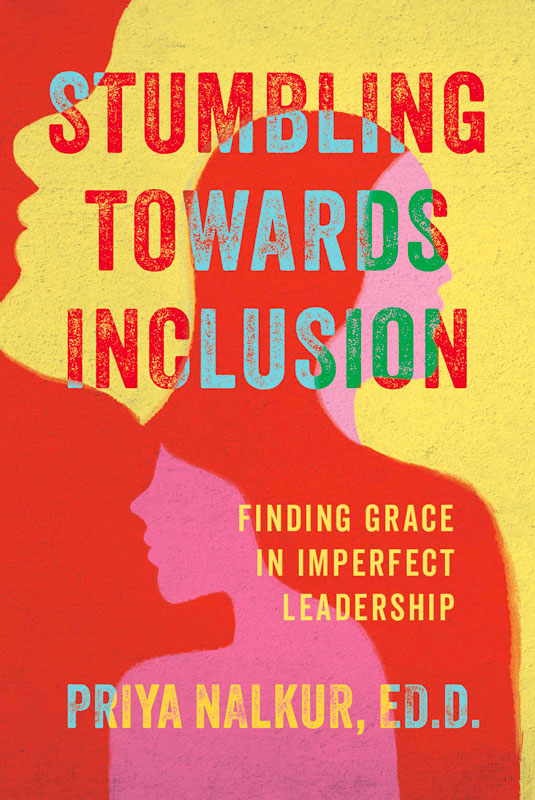If you read blogs about diversity, you can get fast tips for including everyone at work. But if you want to really understand diversity, equity, and inclusion, reading DEI books is better. They can give managers and HR leaders like you a complete understanding of DEI and how to use it in workplaces.
For managers and HR leaders, books are like treasure troves of useful information. They teach not just the theory but also how to actually make workplaces better for everyone. So, in this blog, we’ll talk about how these books can help you make your workplace a more welcoming and equal space.
These 7 books cover everything about diversity at work, from hiring people to stopping discrimination. They teach you a lot about HR. Let’s start reading!
Hiring for Diversity: The Guide to Building an Inclusive and Equitable Organization by Arthur Woods and Susanna Tharakan
This book will help you develop a practical strategy for diversity hiring. With insights from the authors’ research-backed Equal Hiring Index, you will know some real examples of policies and practices used by inclusive hiring leaders today.
What you will learn:
- Building your diversity hiring mission, vision, and goals
- Understanding underrepresented candidates
- Designing an inclusive candidate experience
- Writing inclusive job descriptions
- Diversity sourcing strategies
- Minimizing selection bias
- Developing fair interviewing practices
- Ensuring equitable job offers
It’s Time to Talk about Race at Work: Every Leader’s Guide to Making Progress on Diversity, Equity, and Inclusion – Kelly McDonald
Kelly McDonald wrote a helpful guide for bosses about including people of different races at work. In her book, she gets into how talking openly about race can make companies better.
What you will learn:
- How people who don’t consider themselves racist but may still have diversity blind spots
- The high cost of bias (or why mostly-white businesses are making less money)
- Why your diversity, equity, and inclusion efforts are unsuccessful
- How to talk about race in helpful and positive ways
- Eight ways to make progress on DE & I
- What do you do if you hear or see casual racism in the workplace
- How to find and interview diverse candidates
- Reducing tokenism and bias
Gender Diversity and Non-Binary Inclusion in the Workplace: The Essential Guide for Employers – Sarah Gibson and J. Fernandez
This book teaches about people who don’t identify strictly as male or female and how to support them at work. It gives practical solutions for common problems they face. The book explains who these people are, how to help them at work, and why it’s good for businesses to do so. It’s great for companies wanting to be more inclusive.
What you will learn:
- Introduction to non-binary people: who are they, common non-binary genders, culturally-specific genders, pronouns, and titles
- Key issues affecting non-binary people: healthcare barriers, names and titles, and hate crimes
- Practical steps for inclusion: using gender-neutral language, inclusion policies, gender-neutral bathrooms, and changing rooms, pronouns, and occupational requirements
The Drama-Free Workplace: How You Can Prevent Unconscious Bias, Sexual Harassment, Ethics Lapses, and Inspire a Healthy Culture by Patti Perez
Attorney and HR expert Patti Perez, looked into more than 1200 workplace issues. In her book, she tells us how to stop problems at work before they start.
What you will learn:
- Anticipating scenarios that give rise to drama and what to do to prevent it
- Using persuasive and precise communication to reduce drama
- Writing and drafting workplace policies
- Designing and delivering effective training programs
- Investigating and resolving claims of workplace misconduct
Neurodiversity at Work: Drive Innovation, Performance and Productivity with a Neurodiverse Workforce by Amanda Kirby and Theo Smith
Neurodiversity at Work talks about why it’s important to include people with different ways of thinking. It shows ways to hire and keep people with diverse minds and how to change workplace rules to support them. The book also tells stories from companies that did this well and from famous people with diverse minds who adapted workplaces for people like them.
What you will learn:
- What is neurodiversity and its importance
- Apprenticeships, internships, work placements, and hiring schemes for neurodiverse talents
- Making workplace adjustments
- Everyday meetings, conferences, and seminars: Planning to be neuro-inclusive
- How to be successful in being an inclusive workplace
- Future workspaces and workplaces
Ageless Talent: Enhancing the Performance and Well-Being of Your Age-Diverse Workforce by Lisa M. Finkelstein, Donald M. Truxillo , Franco Fraccaroli and Ruth Kanfer
Ageless Talent talks about how having employees of different ages is good for companies. It explains the advantages of having people of all ages working together and gives plans to help them do well and feel good. The book uses a method called PIERA to make the most out of having employees of different ages. This book is helpful for HR professionals, managers, and leaders who know about workplace psychology.
What you will learn:
- Motivation and engagement across the working lifetime
- Adjusting to changes in worker’s physical and other abilities over time
- Effective teamwork and relationships in diverse teams as workers evolve
- Managing and supporting employees’ success and satisfaction across the lifespan
How to Be an Inclusive Leader: Your Role in Creating Cultures of Belonging Where Everyone Can Thrive by Jennifer Brown
In her book, Jennifer Brown teaches us how to be a leader who includes everyone and talks about the problems many leaders face today. She explains difficult ideas like identity, privilege, and unfair systems. With real examples, she gives clear ways to handle problems, have tough talks, and make things better. The book guides you step by step to understand your privileges and biases and support your employees.
In this book, you will learn:
- Self-awareness, understanding your own biases, and strategies and tools for managing them
- Using empathy, active listening, and allyship to build connections and break down barriers within teams
- Developing an inclusive leadership style and building diverse teams using real-world examples of successful inclusive leadership
Reimagine Inclusion by Mita Mallick

“Reimagine Inclusion” is a book that questions the usual ideas about having diverse and inclusive workplaces. The author, Mita Mallick, who is an expert in diversity, equity, and inclusion (DEI), talks about 13 common misunderstandings about inclusion at work. She also gives a clear plan for organizations to make a genuinely inclusive space. In the book, you’ll find useful tips, stories from real life, and practical ways to change the culture in workplaces to be more inclusive.
What you will learn includes:
- What it really means to have a diverse and inclusive workplace by showing that some common beliefs about it are not true.
- How our hidden biases affect the choices we make and giving practical ways to recognize and deal with them.
- The importance of leaders who support everyone and also advice on how to make leaders who work hard to include everyone.
- Useful tips for making things inclusive and fair for everyone.
- How to leverage people’s various backgrounds and experiences to create workplaces that support everyone better.
- The link between inclusion and engagement in workplace culture.
Stumbling Toward Inclusion: Finding Grace in Imperfect Leadership by Priya Nalkur

“Stumbling Toward Inclusion: Finding Grace in Imperfect Leadership” is a profound exploration of Diversity, Equity, and Inclusion (DEI) initiatives within organizational leadership. Drawing from extensive experiences with diverse organizations and C-Suite executives, Dr. Nalkur addresses the challenges that leaders face in navigating nuanced and complex DEI topics. Unlike many, she acknowledges that leaders often genuinely desire to foster inclusivity but may struggle with the intricacies of implementation.
What you will learn includes:
- Practical touchpoints and vignettes derived from Dr. Nalkur’s coaching experiences, offering tangible guidance for leaders seeking to promote DEI initiatives in their organizations.
- Common anxieties associated with DEI efforts, providing an empathetic space for leaders to learn and grow without the fear of making mistakes.
- Dr. Nalkur seamlessly weaves personal history, social sciences, and leadership principles to create a comprehensive and accessible guide for both allies and individuals from historically underrepresented groups.
- How leaders can foster inclusive workplaces by addressing individual growth and systemic change, recognizing the interconnectedness of both aspects.
Why DEI is important
Imagine a workplace where everyone is treated fairly, no matter where they come from or who they are. That’s what DEI (Diversity, Equity, and Inclusion) is all about. It’s like making sure everyone is invited to the party and has a say.
Why is this so important at work? Well, first, it brings in lots of different ideas, making work more interesting. Plus, it helps in making smarter decisions because everyone’s perspective is considered. Also, happy employees are more productive employees. When people feel respected, they work better.
Workplaces should reflect the diverse world we live in, and companies that are inclusive get the best people to work for them. It’s not just a rule; it’s the right way to do things. Lastly, in our global world, understanding different cultures is key, and having a diverse team helps companies connect with people everywhere. So, DEI isn’t just a set of letters; it’s a recipe for a workplace where everyone thrives.
DEI at work helps with:
More Ideas: When people from different backgrounds work together, they come up with more creative solutions.
- Better Choices: Having diverse perspectives helps make smarter decisions.
- Happy Employees: When people feel valued, they’re happier at work, which means they work better.
- Like the Real World: Workplaces should look like the diverse world we live in.
- People Want to Work There: Companies that are fair and inclusive attract good employees.
- It’s the Right Thing: There are rules that say everyone should have the same chances at work, no matter where they’re from.
- Understanding the World: We live in a big world with different cultures. Having a diverse team helps a company understand and connect with people everywhere.
Why I wrote this
Ongig supports DEI by helping recruiters write inclusive job ads. These DEI books give HR pros like you great resources on diversity, equity, and inclusion principles, plus practical tips on successfully executing them in your organizations. Please request a demo if you’d like to learn more about Ongig’s JD software.
